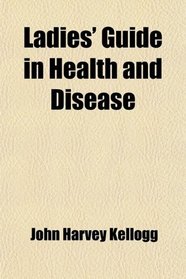Search -
Ladies' Guide in Health and Disease
Ladies' Guide in Health and Disease
Author:
Purchase of this book includes free trial access to www.million-books.com where you can read more than a million books for free. This is an OCR edition with typos. Excerpt from book: to this theory is the fact that a large number of spermatozoa are apparently required for the fecundation of a single ovum. At any rate, it is well known that in... more »
Author:
Purchase of this book includes free trial access to www.million-books.com where you can read more than a million books for free. This is an OCR edition with typos. Excerpt from book: to this theory is the fact that a large number of spermatozoa are apparently required for the fecundation of a single ovum. At any rate, it is well known that in... more »
ISBN-13: 9780217009799
ISBN-10: 0217009794
Publication Date: 8/7/2009
Pages: 372
Rating: ?
ISBN-10: 0217009794
Publication Date: 8/7/2009
Pages: 372
Rating: ?
0 stars, based on 0 rating




